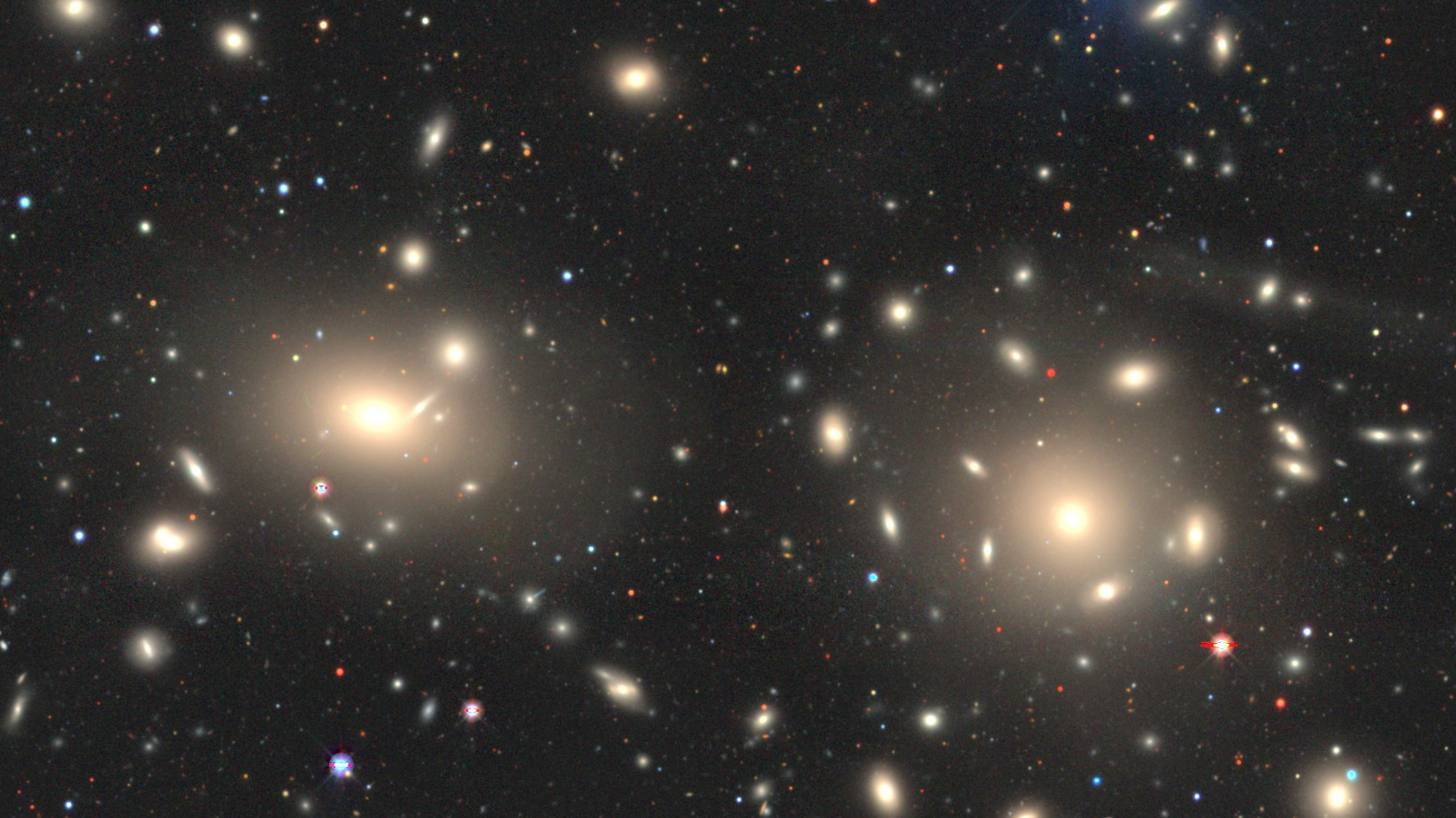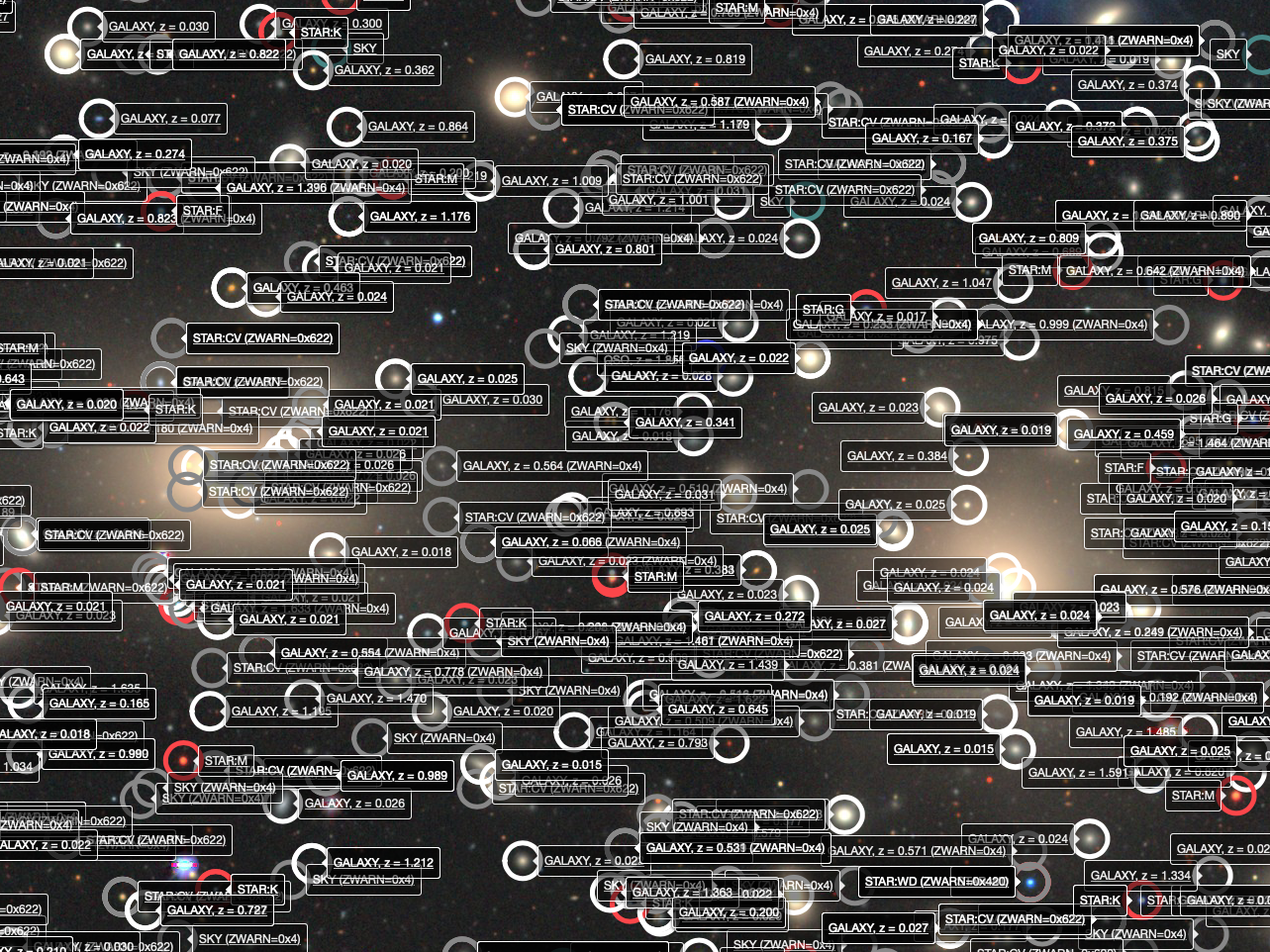Paul Martini, DESI Instrument Scientist
May 17, 2021
The discovery of cosmic acceleration over twenty years ago captured the imagination of the general public and professional scientists alike, and the cause of this acceleration remains one of the greatest, unsolved questions in science. Something mysterious, such as a new particle, a new force of nature, or some property of space itself, is overcoming the gravitational attraction of all of the mass in the universe. While we commonly call the origin of this acceleration ‘dark energy,’ naming it did not solve the mystery, nor have the last two decades of progressively larger and more sophisticated sky surveys.
Enter the DESI survey. For the last decade, hundreds of scientists and engineers have worked to build a new instrument and design a survey capable of constructing the most precise measurement of cosmic expansion history ever. On Friday, May 14 this work came to fruition with the formal launch of survey observations. And over the next five years, DESI will measure approximately 35 million galaxies and quasars that extend across about 12 billion years of cosmic history. These observations will measure an order of magnitude more targets than the largest survey to date, and complete these observations in a small fraction of the time.
DESI aims to survey about 14,000 square degrees of the night sky, which corresponds to most of the sky visible from Arizona. We will do this with over 15,000 unique observations that we call tiles. Each of these tiles is a unique configuration of the 5000 robotically-positioned fiber optic cables designed to collect the light of specific galaxies and quasars distributed across the 3.2 degree diameter field of view of the instrument.
The image below shows a small fraction of this field of view that includes the nearby Coma cluster of galaxies, one of the largest concentrations of galaxies in the local universe. The circles in the bottom panel illustrates the high density of the spectroscopic observations obtained with a single tile. Nearly 10,000 of these tiles are designed for good to great conditions, such as when the Moon does not appreciably affect the darkness of the night sky. In these cases, we observe our faintest targets, including luminous red galaxies, emission-line galaxies, and quasars. The remaining tiles target brighter galaxies and Milky Way stars, sources that can be observed when the moon is brighter and there may be moderate cloud cover.


As the DESI survey will be so much larger than previous surveys, we anticipate measuring cosmic acceleration and other parameters with substantially smaller statistical errors. Yet in order to fully realize these gains, and not be limited by systematic effects, it is especially important for us to carefully plan all aspects of the experimental design and maximize the reproducibility of our work. One aspect of this is that we have built substantial software and hardware systems to help us to achieve the same sensitivity with all of our tiles, in spite of the fact that they will be observed on nights spread over five years, and obtained under nights with varying amounts of atmospheric turbulence or seeing, and varying amounts of cloud cover. Other aspects include superb and repeatable algorithms that handle every aspect of observing, ranging from the selection of potential targets, to the assignment of targets to the individual fibers, to the measurement of their properties.
We have spent the last many months building, testing, and refining all of these aspects of the survey with increasingly sophisticated and extensive observations. During this Survey Validation phase, we have obtained over 1 million unique redshifts, which has already made DESI the second largest spectroscopic redshift survey in the world before it formally begins. Over the coming months, we expect that the number of new galaxies and quasars we measure will continue to expand, much like the universe itself!
